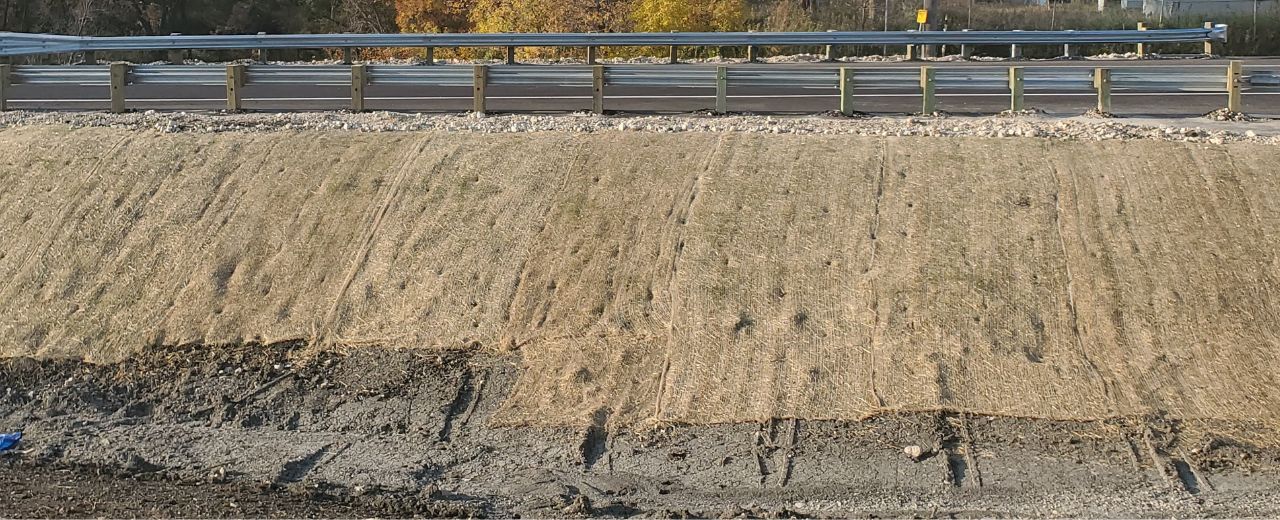Erosion Control Services: Safeguarding the Environment
Wiki Article
Best Practices for Erosion Control in Building Projects
Are you working on a building job and worried regarding disintegration control? In this write-up, we will direct you via the ideal methods for avoiding disintegration on your site. Memphis Erosion Control Solutions excavation. Get prepared to take on disintegration head-on and make sure the success of your building and construction project.5 Vital Disintegration Control Methods

To effectively regulate disintegration on your building and construction site, you'll need to apply vital strategies such as incline stabilization and debris control measures. Incline stabilization is important in avoiding dirt erosion on steep inclines. You can accomplish this by making use of methods like terracing, which entails developing straight steps on the incline to reduce water flow and advertise the absorption of rain. One more reliable method is using erosion control coverings or mats, which are put on the slope and aid preserve soil bits while enabling plants to grow. Debris control actions are also vital to prevent debris drainage right into close-by water bodies. One efficient approach is the installment of silt fences along the perimeter of the construction website. These fencings act as barriers, recording sediment-laden water and enabling it to settle before it gets to the water bodies. Additionally, you can utilize sediment containers, which are short-term retention fish ponds made to trap debris and permit water to slowly drain off. Executing these necessary erosion control methods will aid lessen the adverse environmental influence of your building task and make sure compliance with laws.
Efficient Sediment and Drainage Monitoring

You can properly handle debris and drainage in your construction task by carrying out proper disintegration control steps. Another important technique is the implementation of disintegration control blankets or mats. By applying these erosion control steps, you can successfully take care of sediment and runoff in your building and construction project, decreasing the effect on the setting and complying with regulative requirements.
Secret Factors To Consider for Slope Stabilization
You require to very carefully check out the slope's attributes, such as its structure, angle, and drainage patterns. Look for signs of disintegration, such as exposed origins, fractures, or slumping soil.Once you have determined the unsteady locations, you can start executing procedures to stabilize the slope. One common method is using keeping wall surfaces or terracing to produce a collection of level steps, which can help distribute the weight and avoid further erosion. An additional option is to grow plants on the slope, as the roots can help secure the dirt and control erosion. In addition, mounting erosion control blankets or mats can supply immediate protection while greenery ends up being well established.
It's crucial to on a regular basis check the maintained slopes to ensure their efficiency. Watch out for any indications of activity or erosion, and take prompt activity if required. Normal upkeep, such as evaluating and fixing any kind of broken procedures, is likewise necessary to make sure long-term security.
Best Practices for Greenery and Soil Protection
One reliable way to shield greenery and soil on inclines is by consistently examining for indications of erosion and taking immediate action if necessary. Begin by examining the slope for any type of signs of erosion, such as exposed origins, bare soil patches, or sediment buildup at the base. Implement disintegration control steps such as mounting disintegration control blankets, mulching, or even constructing preserving walls if needed.Carrying Out Correct Drain Equipments
To effectively execute proper drainage systems, it's essential to take into her comment is here consideration the slope gradient and dirt kind. Understanding these elements is crucial when it comes to handling water circulation and stopping disintegration. The incline gradient plays a substantial duty in establishing exactly how water crosses the land. Steeper slopes can cause faster water flow, enhancing the risk of erosion and flooding. On the other hand, gentler slopes allow water to stream extra gradually, minimizing erosion possibility. By evaluating the slope gradient, you can create a reliable drain system that fits the natural water motion.Sandy soils have a tendency to drain pipes faster due to their rugged appearance, while clay dirts have a slower drainage price due to their compact nature. Additionally, thinking about the dirt features assists prevent waterlogging, which can lead to poor plant development and damage to frameworks.
Conclusion
To conclude, when it concerns disintegration control in construction projects, you must adhere to these finest methods. Implement reliable sediment and runoff management strategies to avoid air pollution. Consider slope stabilization approaches to ensure the security of the website. Secure plant life and dirt by utilizing appropriate measures. Lastly, establish proper water drainage systems to handle water flow. By why not try these out following these vital techniques, you can effectively manage disintegration and guarantee the success of your construction project.To successfully control disintegration on your construction site, you'll need to carry out necessary strategies such as incline stabilization and sediment control actions. Incline stablizing is vital in stopping dirt erosion on steep inclines. Another efficient method is the use of disintegration control coverings or floor coverings, which are positioned on the incline and aid keep soil fragments while enabling plant life to grow. One more choice is to grow vegetation on the incline, as the roots can assist secure the soil her response and control disintegration. Implement erosion control actions such as setting up disintegration control coverings, mulching, or also creating retaining walls if required.
Report this wiki page